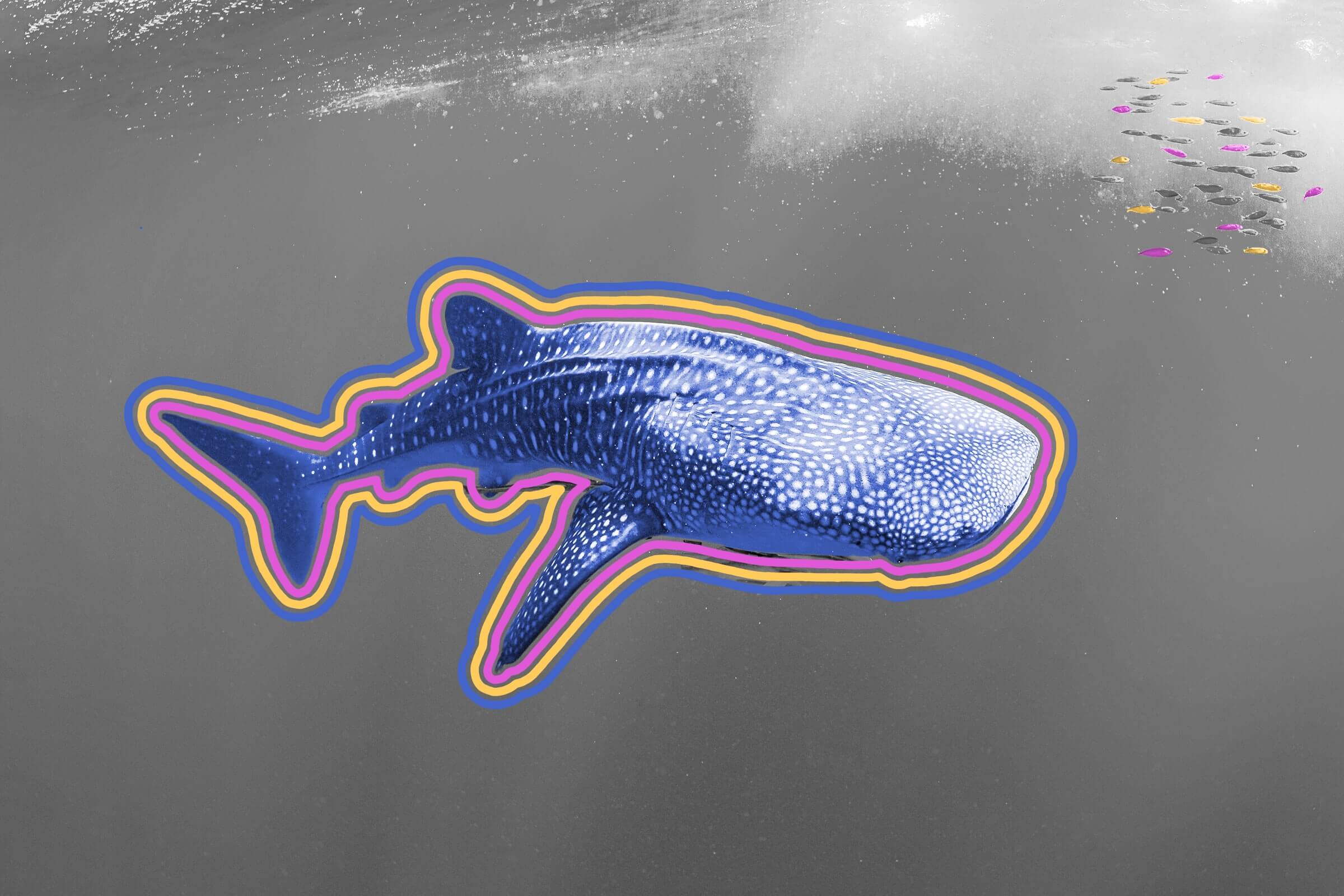
Whale sharks have tiny teeth on their eyeballs.
The animal kingdom is chock-full of strange eyeballs, from the free-roaming peepers of a chameleon (which can move each of its eyes independently) to the w-shaped pupils of a cuttlefish. But one of the strangest attributes of any eyeball on Earth belongs to the whale shark (Rhincodon typus). Because these gentle giants of the sea don’t have eyelids to protect their organs of sight, they’ve developed thousands of tiny teeth known as “dermal denticles” to fend off any potentially vision-damaging elements the ocean might throw at them, whether it’s items drifting in the sea or biochemical hazards. In 2020, scientists in Japan discovered the denticles when analyzing both dead and living sharks, and estimated that each eye could have as many as nearly 3,000 of these tiny teeth. When viewed under a microscope, the denticles resemble the shape of an oak leaf, but much smaller.
Dermal denticles are commonly found on many shark species’ skin, acting like scales that cut down on turbulence and drag when gliding through the water. However, the whale shark is the only species in whom these denticles congregate around the iris. This scale-like armor, combined with the whale shark’s unique ability to retract its eyes into its sockets, has scientists reexamining the importance of a whale shark’s vision. For years, scientists believed that whale sharks largely navigated the world through their sense of smell, but these two distinct evolutionary defenses could mean that vision is much more important to the species than previously thought. It’s often said that humans know more about the surface of Mars than what’s going on in the world’s oceans, and the surprisingly recent discovery of this fascinating ocular biology hints at how many more mysteries might await us in the deep.
Despite its massive size, surprisingly little is known about the reproductive process of the whale shark. Although they travel the entire world (their migration being one of the most epic journeys in the animal kingdom), males and females gather in equal numbers at “hot spots” around the globe. Video captured in 2019 in western Australia appears to show a mating ritual at such a hot spot, though no one has ever seen a whale shark delivering a calf. Scientists know that female whale sharks can store sperm until it’s needed to fertilize eggs; the eggs hatch inside the mother, who can then give birth to up to 300 pups. Although marine biologists are slowly filling in the gaps, this lasting lack of knowledge is troubling, as the whale shark was put on the IUCN Endangered List in 2016. One scientist told The Guardian in 2020 that it’s difficult to have a conservation plan “if you don’t know how, when, or where [the shark] breeds.”

